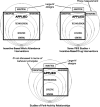The Fuzzy Concept of Applied Behavior Analysis Research
- PMID: 31976938
- PMCID: PMC6701210
- DOI: 10.1007/s40614-017-0093-x
The Fuzzy Concept of Applied Behavior Analysis Research
Abstract
A seven-dimension framework, introduced by Baer, Wolf, and Risley in an iconic 1968 article, has become the de facto gold standard for identifying "good" work in applied behavior analysis. We examine the framework's historical context and show how its overarching attention to social relevance first arose and then subsequently fueled the growth of applied behavior analysis. Ironically, however, in contemporary use, the framework serves as a bottleneck that prevents many socially important problems from receiving adequate attention in applied behavior analysis research. The core problem lies in viewing the framework as a conjoint set in which "good" research must reflect all seven dimensions at equally high levels of integrity. We advocate a bigger-tent version of applied behavior analysis research in which, to use Baer and colleagues' own words, "The label applied is determined not by the procedures used but by the interest society shows in the problem being studied." Because the Baer-Wolf-Risley article expressly endorses the conjoint-set perspective and devalues work that falls outside the seven-dimension framework, pitching the big tent may require moving beyond that article as a primary frame of reference for defining what ABA should be.
Keywords: Applied behavior analysis; Historiography; History; Social validity; Translation.
© Association for Behavior Analysis International 2017.
Conflict of interest statement
Conflict of InterestThe authors declare that they have no conflicts of interest.
Figures




References
-
- Ayres, I. (2010). Carrots and sticks: unlock the power of incentives to get things done. New York: Bantam.
LinkOut - more resources
Full Text Sources

